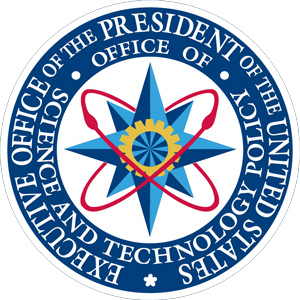Each year in late October, we mark Open Access Week — an international event to raise awareness of issues around access to scholarly publications, and to inspire wider participation in open access publishing and projects.
As we continue our celebration of Open Access Week 2020, we move to an exploration of what COVID-19 has meant for scholarly publishing and open access.
The end of 2019 saw the start of a new pandemic with the identification of a novel virus, eventually named corona (CO) virus (VI) disease (D), or COVID-19. Researchers have been working as quickly as possible to understand the virus (e.g., identifying methods of virus transmission) and to develop treatments. To date, there is no approved treatment or vaccine for the virus.
Important research often behind paywalls
Researchers all over the world are working together to try to speed progress towards treatment or a vaccine. Scientists typically share their research via articles published in scholarly journals. Unfortunately, many journal articles are published in subscription journals, which means that important research is often locked behind paywalls. These paywalls have proved very valuable for commercial publishers. The academic journal market is over $10 billion and publishers have massive profit margins: In 2018, Elsevier’s was 37%, Taylor and Frances was $29%, and Springer Nature’s was 23%.[1]
Recognizing the urgent need for rapid and open dissemination of research findings during this public health crisis, a number of organizations have created databases of COVID-related research and publishers have immediate, free access to some of this research:
- The World Health Organization created a global research database [2]
- The National Library of Medicine created LitCOVID[3] to provide access to relevant articles in PubMed,[4] and,
- The Centers for Disease Control is maintaining the COVID-19 Research Articles Downloadable Database.[5]
Note, however, that although these databases are freely available for anyone to use, many of the publications they index are still behind paywalls. As the CDC’s website notes, “[m]ost publishers are making their COVID-19 content Open Access but some articles that are not Open Access are accessible only to [CDC employees].”
The situation is similar for other researchers — if their affiliated institution has a subscription, they will be able to access the article, but without an affiliation or purchasing a personal subscription, the research remains behind the paywall.
Many publishers are providing free access to articles related to COVID. For example, two of the largest commercial publishers, Elsevier[6] and Springer Nature[7], have made tens of thousands of articles free to read.
Some remaining questions
While we appreciate publishers’ recognition that information sharing is crucial to making progress in the fight against a deadly disease, and their subsequent willingness to make this research open despite financial disincentives, we’re left questioning:
- Why do we accept paywalls for research studying other diseases? Why are we allowing paywalls and embargos [placing articles behind a paywall for a certain amount of time, often 12 months] to slow research progress towards cures for cancer, ALS, or Alzheimer’s disease?
- How long will the COVID-related articles be freely available? All that publishers have agreed to do is to provide these articles for free reading, without an open license applied. They can move this research back behind a paywall at any time.
- What does it mean if publishers can provide free access to these materials? Is their profit margin so high that they can afford to make this information free and still remain profitable?
- What role are we playing in a system in which publishers make enormous profits selling back to researchers what they, the researchers, have given to them at no cost? Is this a role we want to continue?
Some promising developments
There have been promising developments over the last decade or so to make research more available. For example:
- The National Institutes of Health has required articles resulting from research they fund to be made publicly available since 2008.
- Following a 2013 memorandum from the White House Office of Science and Technology Policy (OSTP), 20 additional federal departments and agencies that fund research have created public access requirements that outline which research outputs must be shared and where they should be deposited (for example, NIH-funded research is deposited into PubMed Central).
Unfortunately, these policies allow for a 12-month embargo: a study describing the mechanism of action or transmission methods of COVID-19 that was funded by NIH and published in May 2020 is not required to be publicly available to all researchers until May 2021.
In February 2020, before COVID-19 was confirmed to be widespread across the United States, the White House OSTP requested information on Public Access to Peer-Reviewed Scholarly Publications, Data and Code Resulting From Federally Funded Research. The proposal from OSTP would require immediate public access to federally funded research. Not surprisingly, publishers argued against the change,[8] while research institutions like the U of M[9] highlighted all of the possible benefits to such a change. There has not yet been any action following the comment period.
Access is limited by publishers. In our current system, publishers determine what information gets shared and with whom it is shared. But there are actions we, as scholars, can take to open up access. Learn more about how to make your research open.
Notes
[1] https://www.bloomberg.com/opinion/articles/2020-06-30/covid-19-shows-scientific-journals-like-elsevier-need-to-open-up
[2] https://www.who.int/emergencies/diseases/novel-coronavirus-2019/global-research-on-novel-coronavirus-2019-ncov
[3] https://www.ncbi.nlm.nih.gov/research/coronavirus/
[4] https://pubmed.ncbi.nlm.nih.gov/ Not everything indexed by PubMed is freely available; it links to publicly available items in PubMedCentral.
[5] https://www.cdc.gov/library/researchguides/2019novelcoronavirus/researcharticles.html
[6] https://www.elsevier.com/connect/coronavirus-information-center
[7] https://www.springernature.com/gp/researchers/campaigns/coronavirus
[8] https://presspage-production-content.s3.amazonaws.com/uploads/1508/coalitionletteropposinglowerembargoes12.18.2019-581369.pdf?21461






